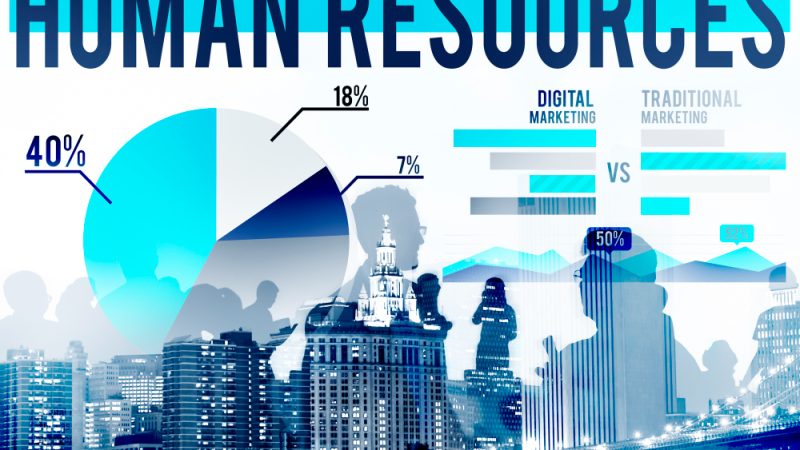In today’s rapidly evolving business landscape, human resource demand forecasting has emerged as a critical tool for organizations to anticipate and meet their future workforce needs. By accurately predicting the demand for talent, companies can effectively plan their recruitment, training, and retention strategies, ensuring they have the right people in the right roles at the right time. In this article, we’ll delve into the importance of human resource demand forecasting and explore how organizations can leverage this practice to stay ahead in the competitive market.
1. Understanding Human Resource Demand Forecasting
Human resource demand forecasting involves predicting the future demand for employees based on various factors such as business growth projections, industry trends, technological advancements, and demographic changes. It provides organizations with valuable insights into the quantity and quality of talent they will need to achieve their strategic objectives.
2. Importance of Accurate Forecasting
Accurate forecasting is essential for organizations to avoid talent shortages or surpluses, which can have significant implications for their performance and competitiveness. By anticipating future demand, companies can proactively address recruitment challenges, minimize hiring costs, and maintain productivity levels.
3. Factors Influencing HR Demand
Several factors influence human resource demand, including economic conditions, industry dynamics, technological innovations, regulatory changes, and shifting consumer preferences. Organizations must analyze these factors comprehensively to develop robust forecasting models.
4. Types of Forecasting Models
There are various types of forecasting models used in human resource management, including trend analysis, ratio analysis, regression analysis, and scenario planning. Each model offers unique advantages and can be tailored to suit the specific needs of an organization.
5. Data-driven Decision Making
Human resource demand forecasting relies heavily on data analysis and interpretation. By leveraging advanced analytics tools and techniques, organizations can extract actionable insights from vast amounts of data, enabling data-driven decision-making in workforce planning and management.
6. Aligning HR Strategy with Business Goals
Effective human resource demand forecasting requires alignment between HR strategy and overall business goals. HR professionals must collaborate closely with senior leadership to understand organizational objectives and develop workforce plans that support long-term growth and sustainability.
7. Mitigating Risks and Uncertainties
In today’s volatile business environment, organizations face various risks and uncertainties that can impact workforce demand, such as economic downturns, geopolitical events, and natural disasters. Human resource demand forecasting helps companies identify potential risks and develop contingency plans to mitigate their impact on staffing levels.
8. Leveraging Technology for Forecasting
Advancements in technology, such as artificial intelligence (AI) and machine learning, have revolutionized human resource demand forecasting. These technologies enable organizations to analyze complex data sets more efficiently, identify patterns and trends, and generate more accurate predictions.
9. Continuous Monitoring and Evaluation
Human resource demand forecasting is not a one-time exercise but rather a continuous process that requires ongoing monitoring and evaluation. Organizations must regularly review and update their forecasting models to reflect changes in internal and external factors and adjust their workforce plans accordingly.
10. Best Practices for Implementation
Implementing an effective human resource demand forecasting process requires careful planning, stakeholder engagement, and investment in technology and talent. Organizations should establish clear objectives, define key performance indicators, and regularly communicate with all stakeholders to ensure alignment and commitment.
Conclusion
In conclusion, human resource demand forecasting is a strategic imperative for organizations seeking to thrive in today’s competitive business environment. By accurately predicting future talent needs and aligning HR strategies with business goals, companies can ensure they have the right people in place to drive success and innovation. Embracing data-driven decision-making, leveraging advanced technologies, and adopting best practices are essential steps in meeting tomorrow’s workforce needs today.
FAQs
1. What is the role of HR demand forecasting in workforce planning?
HR demand forecasting plays a crucial role in workforce planning by helping organizations anticipate future talent needs, identify potential gaps, and develop strategies to address them proactively.
2. How can organizations ensure the accuracy of their forecasting models?
Organizations can ensure the accuracy of their forecasting models by using a combination of historical data, industry benchmarks, expert judgment, and advanced analytics techniques. Regular validation and refinement of the models based on actual outcomes are also essential.
3. What are the benefits of leveraging technology for HR demand forecasting?
Leveraging technology for HR demand forecasting enables organizations to analyze vast amounts of data more efficiently, identify patterns and trends, and generate more accurate predictions. It also allows for real-time monitoring and adjustment of workforce plans based on changing conditions.
4. How often should organizations update their forecasting models?
Organizations should update their forecasting models regularly to reflect changes in internal and external factors such as business strategies, market conditions, technological advancements, and regulatory requirements. Quarterly or semi-annual updates are recommended, although the frequency may vary depending on the industry and organization’s specific needs.
5. What are some common challenges in implementing HR demand forecasting?
Common challenges in implementing HR demand forecasting include data quality issues, lack of alignment between HR and business objectives, resistance to change, and reliance on outdated or inadequate forecasting methods. Overcoming these challenges requires strong leadership support, investment in technology and talent, and a culture of continuous improvement.
Also read : WALL PANELS FOR BEDROOM TRANQUILITY: 10 SERENE OPTIONS FOR PEACEFUL SLEEP









